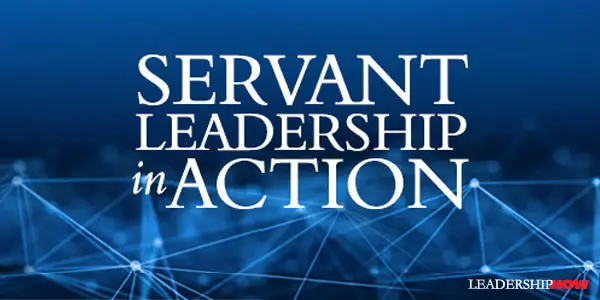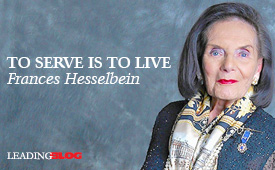 |
 |
04.03.18

Servant Leadership in Action
T Ken Blanchard begins by telling us that some people think you can’t lead and serve at the same time. But that is because they don’t understand that there are two parts to servant leadership: a visionary/direction, or strategic role—the leadership aspect of servant leadership and an implementation, or operational role—the servant aspect of servant leadership. “The leadership aspect of servant leadership is the responsibility of the traditional hierarchy. The servant aspect of servant leadership is all about turning the hierarchy upside down and helping everyone throughout the organization develop great relationships, get great results, and, eventually, delight their customers.” Raj Sisodia is a leader in the Conscious Capitalism movement and relates servant leadership to the acronym, SELFLESS: Strength, Enthusiasm, Love, Flexibility, Long-Term Orientation, Emotional Intelligence, Systems intelligence, and Spiritual Intelligence. He explains, “The servant leader is a whole person, not a fragmented being. SELFLESS reflects a harmonious blend of mature masculine and mature feminine qualities.” Steven R. Covey says that trust is essential. “Both servant leadership and trust-based leadership stand in opposition to traditional positional leadership, which is steeped in the language of control: ‘You have to do what I say because I’m the boss.’ On the other hand, servant leaders and trust-based leaders alike draw from a deeper well of meaning. They serve first and they extend trust first. Leadership is the by-product and positional authority is, at best, an afterthought.” Mark Floyd admits, “Servant leaders are not always perfect, but they stay true to their leadership style. They stay humble by turning the organizational chart upside down and serving others. They communicate to their teams the goals and values that form their culture so that everyone stays in focus. They are aware of their own strengths and weaknesses—through feedback and by following the greatest servant leader of all time [—Jesus]. And they continually strive to do the right thing.” Simon Sinek adds, “The daily practice of servant leadership is less grand than people tend to think. It is not based on a series of transactions, but on the promise of being there when someone needs you most. … A leader who offers money or the potential for future riches is not earning loyalty. They are setting up a transactional relationship that is likely to promote self-interest. … A few scattered, well-intentioned actions by a leader can’t hurt, but they won’t breed loyalty. They won’t be enough to earn trust. Just like any relationship in which trust is the basis, it is the combination of a lot of little things that makes all the difference.” To avoid the triggers that would pull you off course, Marshall Goldsmith recommends that the next time you run into a conflict, ask yourself this question: “Am I willing, at this time, to make the investment required to make a positive difference on this topic?” Erwin McManus illustrates that servant leadership is not a technique but a way of being. After his wife watched him perform a reluctant act of service for a homeless man in a downpour, she said, “That was the greatest sermon you have ever preached.” Those words changed his life. He writes, “Frankly, I had always hoped my greatest message would be to an audience of thousands, not to an audience of one. Now I know better. Our message is always given to an audience of one—the person we are serving. In serving others, our message is our lives. We must live our message for our message to have life. To me, that’s what servant leadership is all about.” To McManus' point, Jon Gordon adds in his essay, “My company’s mission is to inspire and empower as many people as possible, one person at a time. One person at a time means we will never be too busy to help one person in need.” In other essays by Brené Brown, Cheryl Bachelder, Henry Cloud, Jon Gordon, James Kouzes, Patrick Lencioni, Dave Ramsey, Art Barter, Larry Spears, and many others, you will find many more helpful ideas and thoughts that will help you shape and refine your leadership approach.   
Posted by Michael McKinney at 02:08 PM
|
BUILD YOUR KNOWLEDGE
 

How to Do Your Start-Up Right STRAIGHT TALK FOR START-UPS 
Grow Your Leadership Skills NEW AND UPCOMING LEADERSHIP BOOKS 
Leadership Minute BITE-SIZE CONCEPTS YOU CAN CHEW ON 
Classic Leadership Books BOOKS TO READ BEFORE YOU LEAD |